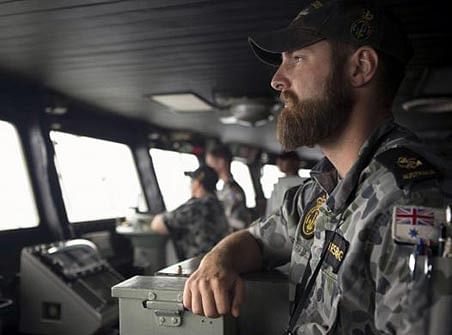Hunt for missing jet debris moves north
Hunt for missing jet debris moves north

The hunt for debris from Malaysia Airlines flight MH370 off the coast of Western Australia shifted north on Monday, as Deputy Prime Minister Warren Truss said Australia was "clutching at whatever little piece of information that comes along" in the search for the missing plane.
The shift to an area some 850km north of the weekend's search zone came after French satellites spotted "floating debris" in the ocean, Malaysian The Star Online reports quoting an ABC News report.
Speaking to Radio National on Monday, Truss said the overall search area had now been extended to cover 68,000 square kilometres.
"Certainly the areas where debris has been picked up by satellites is of particular interest, and they're the focus of a lot of the searching," Truss said.
"The French sighting is a piece of new material because that is in a completely different location. That is about 850km north of our current search area.
"So we need to check that out as well."
Malaysia's transport ministry said the French images showed "floating debris" and said they had been sent to Australian authorities coordinating the search.
Truss said the debris in the French images was not in an area authorities had identified as the most likely place where the aircraft might have entered the sea.
"We still don't know for certain that the aircraft is even in this area," he said.
"We are just clutching at whatever little piece of information that comes along to try and find a place where we might be able to concentrate the efforts."
He also said Tropical Cyclone Gillian, near Christmas Island, could bring bad weather south, hindering search efforts.
"It is a very difficult task. The weather yesterday (Sunday) wasn't too bad, although there was early morning fog," he said.
"Today (Monday) we expect the weather to deteriorate and of course the forecasts ahead are not all that good.
"So it's going to be a challenge but we'll stick at it," he added.
The pilot of one of the Royal Australia Air Force Orions involved in the search said conditions had been challenging.
Flight Lieutenant Russell Adams said there had been heavy cloud cover and his crew was not able to spot any debris.
"We're working directly with Rescue Coordination Centre Australia as one small cog in this giant effort," he said.
"We're going out there for two, three hours at a time, so the satellite imagery is going through the centre, and we've been tasked appropriately through them.
"As per the effort that my crew's putting in, we couldn't be more proud of the boys and girls."
Flight MH370 went missing on March 8 en route from Kuala Lumpur to Beijing with 239 people aboard, including six Australians.
On Sunday, authorities completed a fourth day of sorties into the search zone, where they are now also searching for an object that China identified as being 22m long and 13m wide.
The object was spotted about 120km south-west of two possible objects seen on satellite images taken on March 16 and announced by the Australian Government on Thursday.
The Chinese satellite images were taken on March 18 by the high-definition Earth observation satellite Gaofen-1.
Eight aircraft were involved in Sunday's search and the Royal Australian Navy's HMAS Success was also in the area.
Australian Air Force Commander Craig Heap said it was fantastic to have two Japanese P3 Orion planes helping with the operation.
"We have worked many times with the JMSDF (Japanese Maritime Self-Defense Force) over the years, especially the P3 crews," he said.
"They are highly professional and they'll bring a tremendous capability to this operation.
"They bring a P3 which is an extended range, specifically designed for maritime patrol.
"They're also extremely professional aviators."
On Saturday, a civilian plane reported sighting a number of small objects close together in the search zone.
A P3 Orion aircraft flew over the area but could see nothing but seaweed.
The Orion dropped a marker buoy to track movement of the material and a merchant ship has been sent to locate and identify it.
Speaking from Papua New Guinea on Sunday, Prime Minister Tony Abbott said one of the objects was reported to have been a wooden pallet.
"Obviously, we have now had a number of very credible leads and there is increasing hope, no more than hope, that we might be on the road to discovering what did happen," he said.